Reader Dani sent us these pictures of a skillet to identify and I am stumped. Does anyone know what Revere line this belongs to?
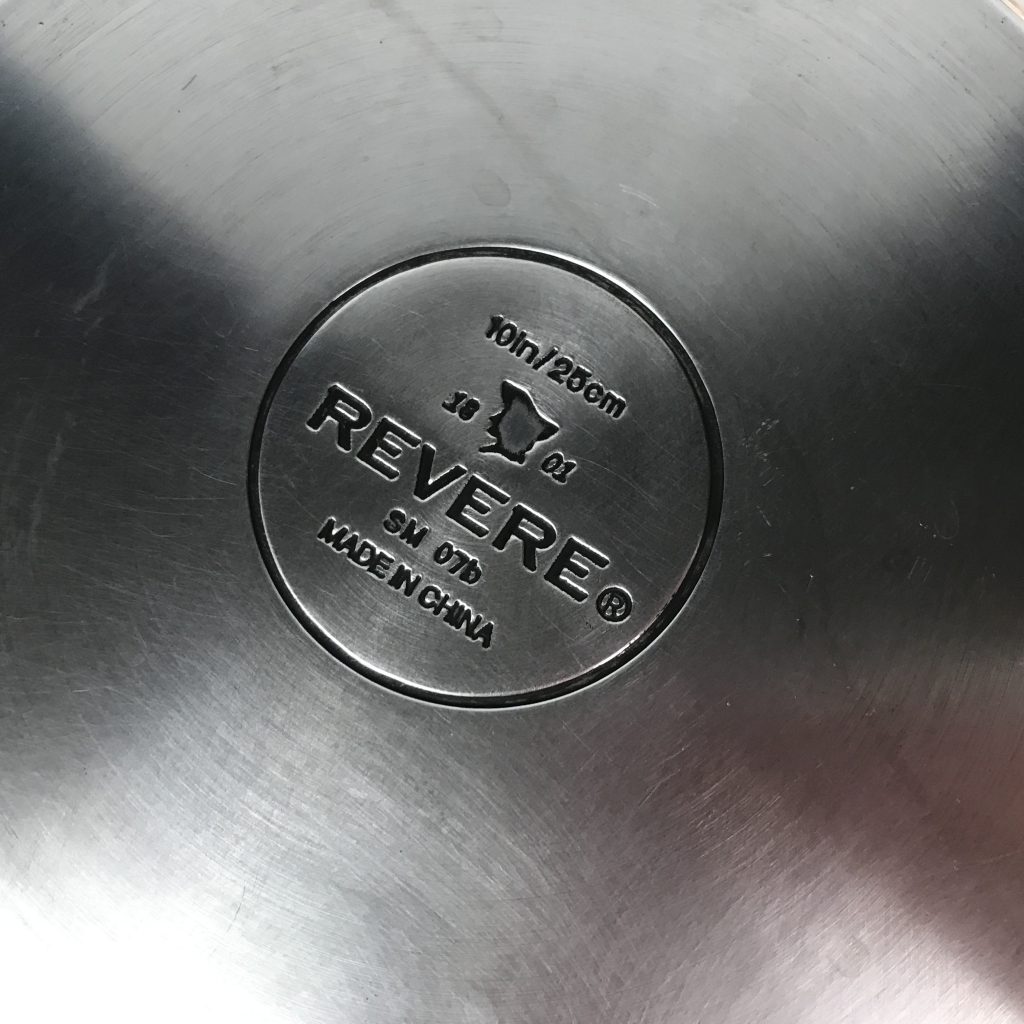
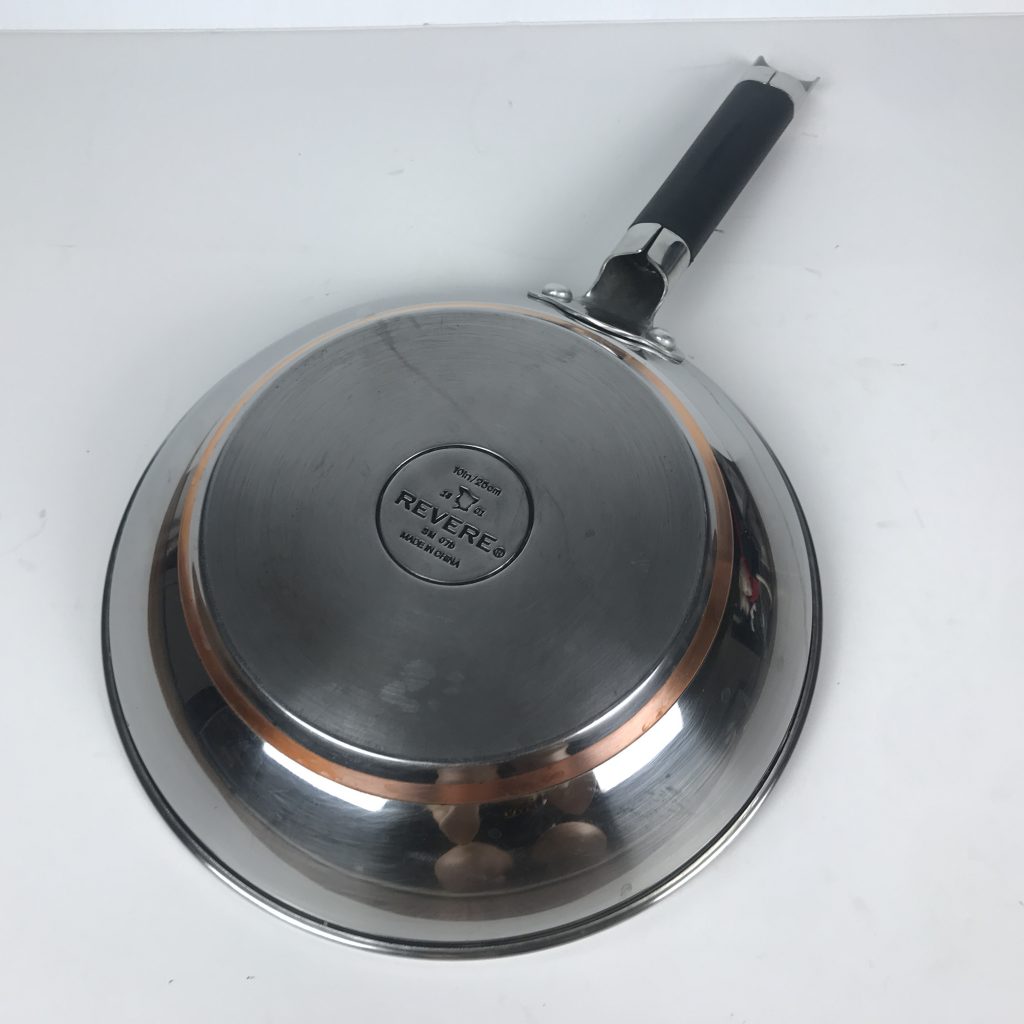
Reader Dani sent us these pictures of a skillet to identify and I am stumped. Does anyone know what Revere line this belongs to?


A customer’s Mom loved her Revere Ware and for years put up with a broken handle by using a rubber band to hold it together.

Then she found us and replaced the handle.

She writes:
The part you sent fit PERFECTLY and took me less than 5 min to install. The rubber band was to make fun of my mom who had it like that for 10 years 😉 Thx so much! 🙏🏽

We love a happy ending. 🙂
Here is a small snapshot into inflation. Consider this play Revere Ware set from a 1977 Sears catalog.
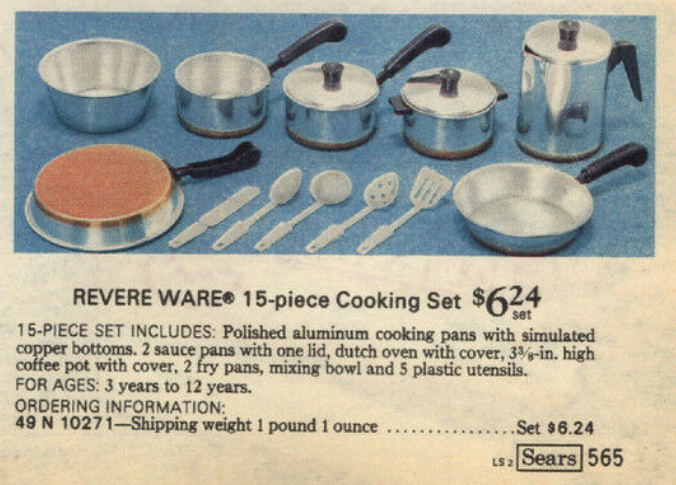
It is hard to imagine a play set like that selling for $6.24 when you consider what that can buy today (a Starbucks Latte or thereabouts).
This has got to be the most surprising Revere Ware product I’ve seen yet, an instrument sterilization tray.
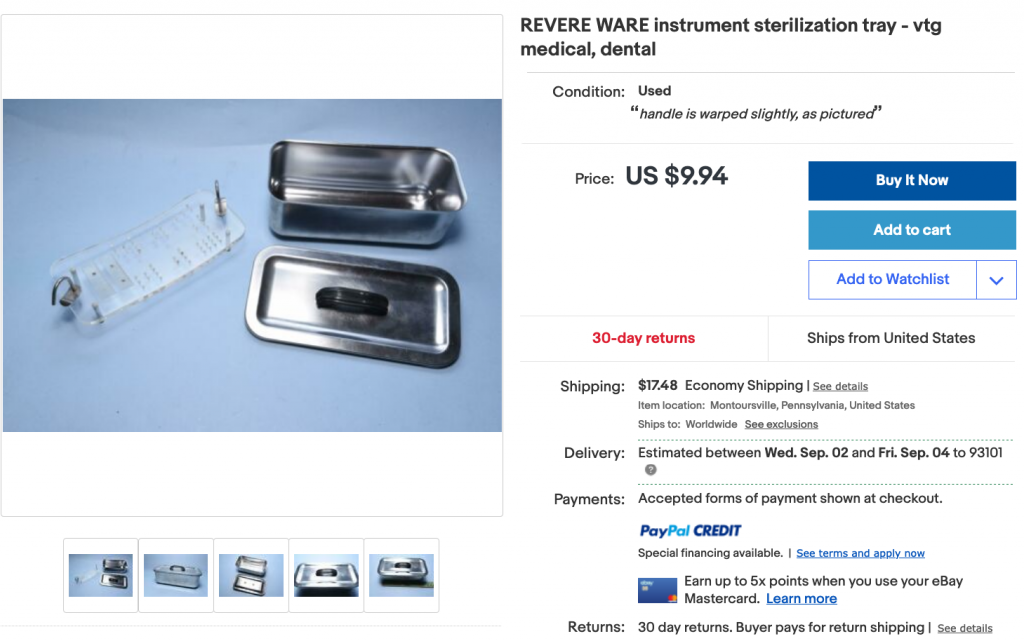
It’s definitely Revere Ware:
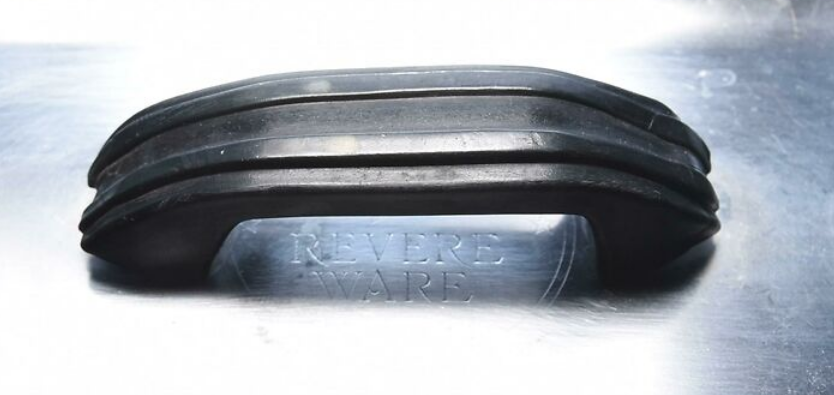

Well, here we are in the 5th month of the pandemic. Since April, we’ve seen a boost to sales as people spend more time (a lot more time) at home cooking, and are likely wanting their cookware to be in tip top shape.
May was our best month ever, in 11 years, and was 2 1/2 times our normal May volume.
June slowed down somewhat, but was still 1 1/2 times our normal June.
But July picked up significantly again and was about equal to our busiest month of the year, January, and was almost double our typical July.
The sad news is, the trend in July is probably happening because the coronavirus is again running rampant, worse than it ever has, and people are once again hunkering down and spending less time going out, and more time cooking in.
In this sense I guess we are just one more dashboard into how the country is feeling about the coronavirus.
As we’ve discussed before, 70% of our sales are through Amazon.com, up from none in 2009. Amazon.com has capture more and more of our sales, something through aggressive tactics like advertising against our own website through Google AdWords. And there’s been a lot of news in the last couple of months about Amazon.com using its position as a third party marketplace to glean data to become a competitor for some of the top selling products.
Besides all that, how is Amazon.com for consumers? My personal experience is that I continue to practice higher and higher levels of caution when shopping on Amazon.com, and I continue to look for more reliable alternatives for some of my purchase categories.
So what’s the problem?
About 10 years ago Amazon.com started courting Chinese sellers aggressively to help fill up their marketplace. Because of multi-national agreements on postal service costs, shipments from China can often be shipped for less than the cost of shipping within the US, very often far less. My guess is that our average postage cost for shipping first class packages within the US is about $4.00. Many shipments from China can be shipped from China to their final destination in the US for a third of that. That gives Chinese sellers a significant advantage. So theirs that.
But if you’ve had any experience dealing with companies in China, they work from a different rule book; dishonesty seems much more common and is considered acceptable by many. It is not uncommon for employees in China to arrange for two invoices when dealing with vendors, one of which shows an inflated price and one shows the real price; the employee pockets the difference. It is also common for vendors to fake material certifications and substitute inferior materials.
So it doesn’t come as much of a surprise that a huge increase in Chinese sellers now selling on Amazon.com brings with it a lot of problems, like:
Fake products
Perhaps 3 or 4 years ago I bought some Apple earbuds off of Amazon.com; they were cheaper than on Apple.com and had stellar reviews. What arrived were so obviously inferior and stopped working after a short while.
Inferior products
The prevalence of Chinese sellers on Amazon.com means that a majority of pretty much any category of item you are looking for will be really cheaply made and marginally functional items.
Fake reviews
I think 2 or 3 years ago the fake reviews started in earnest. At first it was really obvious stuff, like 3,000 identical 5-star reviews on a product all added on the same day, or reviews done in really bad English. But as time when on, it got more sophisticated. In addition to realistic looking completely fake reviews, sellers routinely simply pay shill buyers to buy their product and give it a positive review, and then reimburse them for the cost. I’ve received cards with purchases from Amazon.com offering to refund the purchase price for a positive review, so they are pretty bold about trying to recruit people.
Brushing
You might be familiar with the brushing scam from all the unsolicited seeds that have been sent to people in the last couple of months. Apparently this scam involves sellers using fake accounts to buy their own products, then mailing them to unsuspecting people. They do this to ensure they can write positive reviews for their own products, thereby giving their items a boost in Amazon’s search results.
Account takeovers
We’ve even heard of unscrupulous sellers registering trademarks and then using them to claim that they own a seller account, thus taking it over from the legitimate account owner. They then start selling inferior knockoffs from the account to capitalize on the brand (and in the process ruining the brand).
Fake competitor reviews
Some sellers will intentionally add obviously fake reviews to a competitors product so that the product gets banned by Amazon.com. Or they will leave negative reviews to drag the overall rating down. This means that it is harder to tell the good products from the bad ones.
Help?
I’m sure there are more I’ve missed. After reading all this you might be thinking that Amazon.com is a wasteland and you should stay far, far away from buying anything there. You might not be too wrong. So what can you do?
Use a review filtering service
First and foremost is to use a review service and / or plugin like FakeSpot or ReviewMeta to get a clearer picture of products and sellers. These services use artificial intelligence to (try and) weed out the real reviews from the fake ones. It isn’t uncommon to see a 4 1/2 start rating get restated to a 1 1/2 star one after the bogus reviews are filtered out. They also rate sellers from A (good) to F (very bad) based on how many of the reviews are fake. I no longer buy from sellers that don’t have a B or better rating.
Buy from people you already know
If you are happy with a product, buying it again from the same seller isn’t a 100% guarantee, but is pretty close. A lot of what we do is repeat buying.
Distinguish between safe
Buy elsewhere
A lot of big retailers are getting their e-commerce act together and are great places to buy things now. Personally, I am trying to move a lot of my purchases away from Amazon.com as I just don’t like supporting a retailer that has created and supports so much pandemonium on their marketplace.
Here are some of my favorites.
Walmart.com has free 2-day delivery on lots of items and items can be shipped to a nearby store for pickup for free.
Target.com can ship things to a nearby store for free and get 2-day free delivery for orders over $35. We are lucky enough to have a small footprint Target nearby that isn’t too busy.
B&H Photo Video has an astounding deal for tax-free purchases, especially important for us as the sales tax in our state and town is almost 9% now. If you sign up for their PayBoo credit card, any purchases you make with it will automatically refund you the tax, effecting a tax free purchase. I make all of my large electronics purchases from them now, like the new iPads we just got for our kids for the coming (remote learning) school year.
Yes, we sell on Amazon.com
As mentioned above, about 70% of our sales volume is on Amazon.com. But you can trust our listings on Amazon.com for one really good reason – we are the only company that sells what we sell. No-one else offers Revere Ware replacement parts and I seriously doubt anyone would go through the trouble to knock off the parts to start selling inferior versions given that our product is somewhat niche and doesn’t have huge sales volumes.
